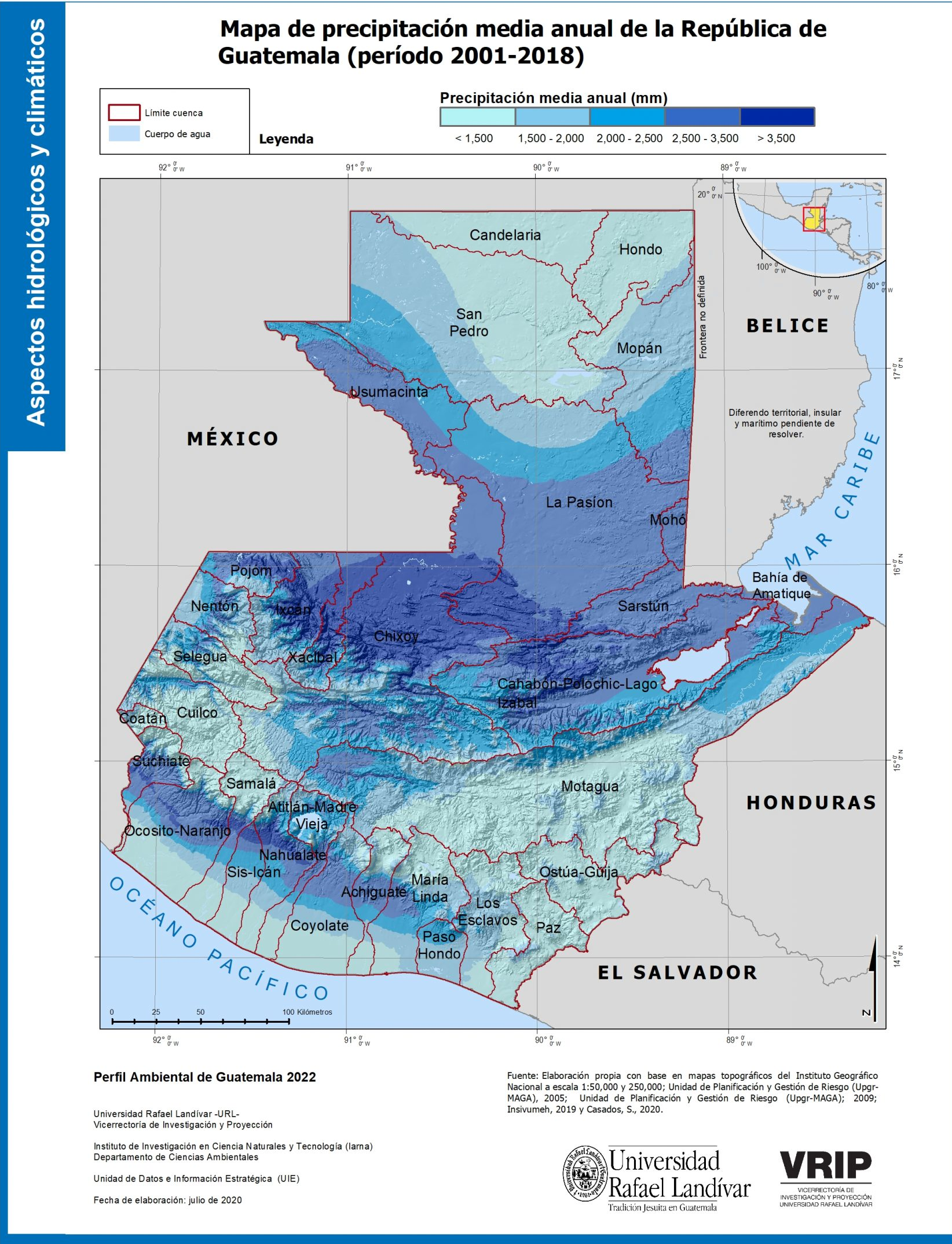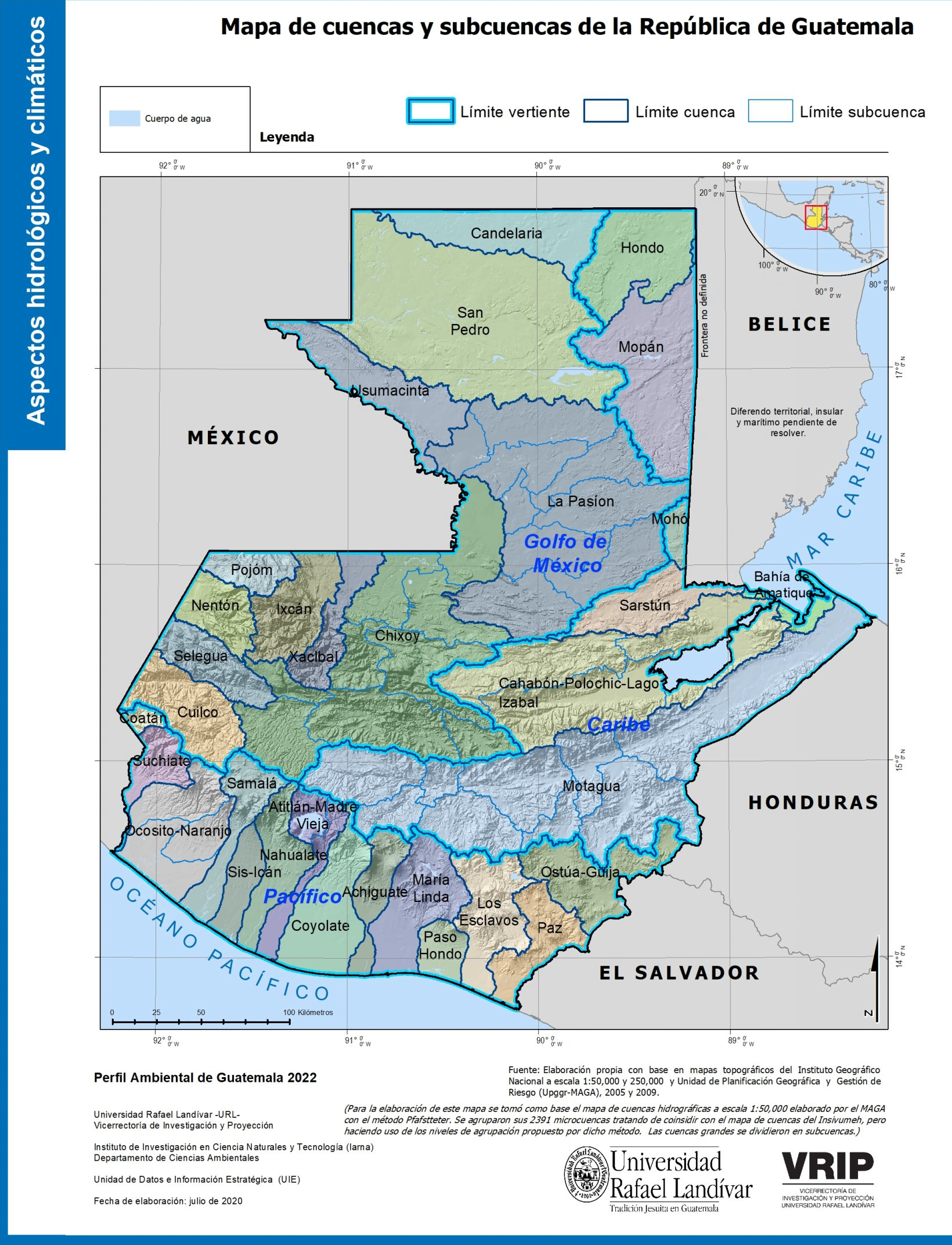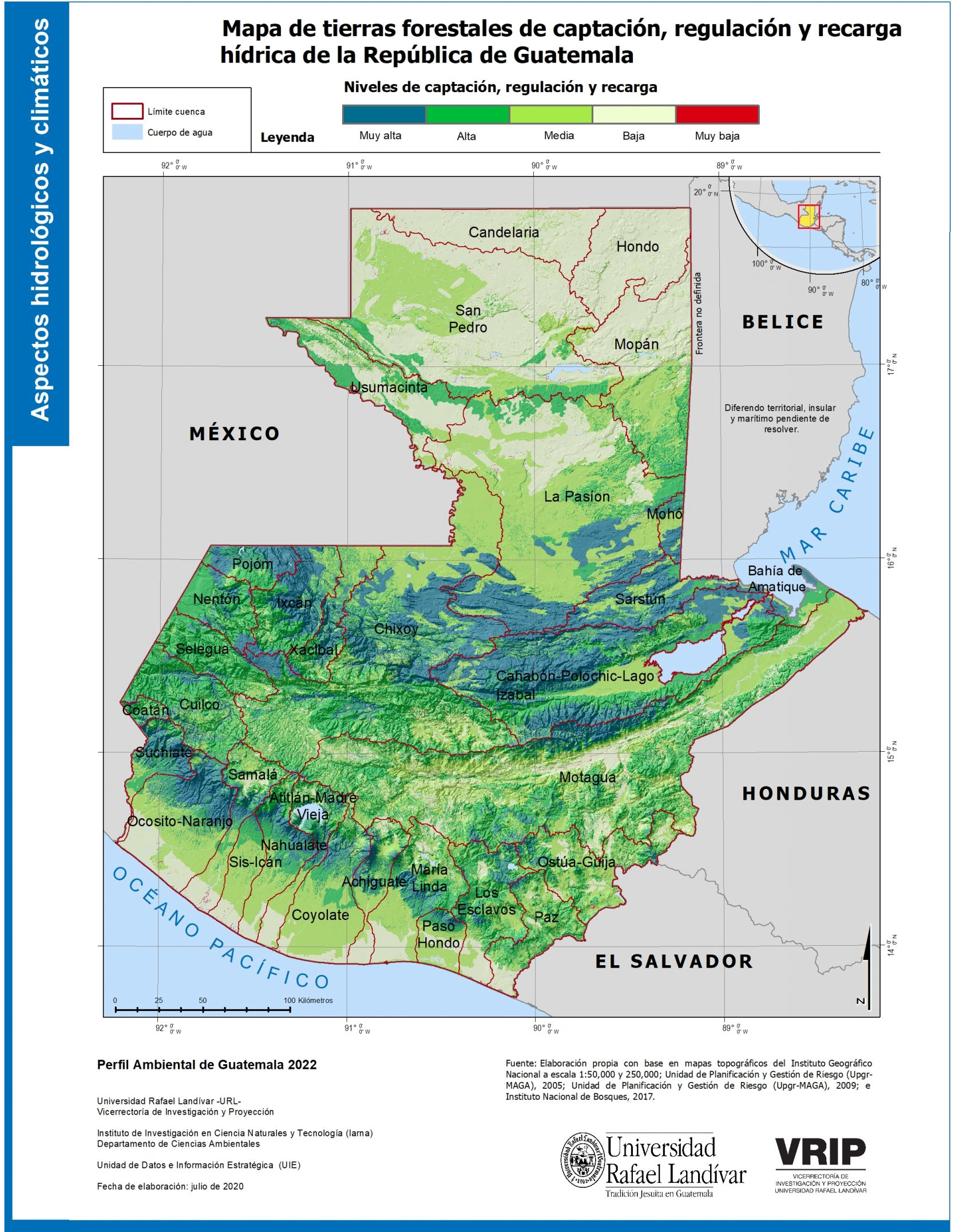The RedSUR collective carried out several activities aimed at raising awareness of the water problem in Guatemala during the last quarter of 2022, as part of the campaign Without Water There is No Life. We met with Sara Ortiz, an engineer and researcher at the Research Institute of Natural Sciences and Technology (Iarna) of the Rafael Landivar University, at one of these activities and spoke to her about three key issues related to this topic.
It has rained a lot in Guatemala this year, but there are still many regions that suffer permanent water shortages. How do you assess the availability and access to water for the population in Guatemala?
The population has greater access to water during the rainy season,1 although this varies across to the different territories. During the dry season, however, there are problems in the capital and the Dry Corridor (a region to the East and including parts of Quiché), as both regions are prone to drought. This situation is aggravated by climate change, which is already occurring here. It’s not something that’s going to happen in 20 years, it’s already happening. This is precisely what is causing longer periods of drought, less rainfall in some places and, on the other hand, an increase in extreme weather events such as: floods, mudslides, etc. This not only affects people's access to water, but also their ability to maintain their livelihoods. A large part of the population depends on agriculture and both droughts and floods cause crop failures, which affects food security and income generation.
There are regions that experience year-round shortages due to the geographic distribution of water, while in other areas there is high availability. This is related to population growth and the increased use of water for various types of projects, such as agro-industrial plantations and other industries which affect the amount of water available to the population. In short, although the available water from rainfall is greater than the amount of water being used, it is not available across the country in a uniform manner and distribution is also affected by the seasons (rain/dry).

In your opinion, what are the causes of water scarcity: population growth, infrastructures, ...?
It is not necessarily population growth that causes the shortages, but rather the increase in urbanization and the soil being covered by materials such as concrete or asphalt. Obviously in this case the soil no longer has the capacity to filter water. This has been increasing a lot in capital city over the last 35 years, where urbanization has tripled. In 1975 there were 555 square km of urbanized area in the capital and by 2014 this had risen to 1,600 square km, which is having a strong impact on the filtration capacity of the soil.
The change of use and the loss of forest cover also affects the hydro-logical cycle, as eliminating the forest, for example, impacts the soil’s capacity to reduce the flow of water, allow infiltration and regulate flooding. The forest still manages to absorb a good amount of water when it rains too much or too much over a short period of time; if there is no forest, the water runs off and reaches the populations with greater force, causing disasters such as floods.
Another aspect to highlight is water quality, and this has to do, for example, with untreated wastewater. It is estimated that approximately 95% of the water used in industry, specifically in agribusiness, as well as in private homes, reaches bodies of water without any type of treatment. This means that even with large bodies water, the water becomes unusable, because it would first have to by disinfected or, depending on its use, be treated.
By 2010, we were already aware that 18 of the country's 34 main rivers were polluted, which shows how this problem goes back many years. The lakes are also highly polluted; the four largest – Amatitlá, Atitlán, Petén Itzá and Izabal – were already showing levels of eutrophication.2 The water flowing into the lakes is contaminated with fertilizers used in agriculture and erosion. This allows the growth of cyanobacteria,3 harmful algae and other chemical reactions that cause visual affects (sometimes you see pieces of green "custard" above the lakes that do not allow the sun to pass through), but which also impact biodiversity, because the different species can no longer receive the same amount of oxygen and may die. Depending on what type of bacteria or algae is reproducing, they can also produce toxins that cause damage to the health of people and animals that drink, or simply come into contact with, the water.
In addition there is solid waste, which is a visual problem. Trash is not being disposed of and we see this in all water sources: lakes, rivers and beaches. This is a problem that also affects water quality.

What specific aspects should a water law regulate so that there is greater control over the use of water in Guatemala?
There are several aspects, for instance, cross-boarder water sources should be regulated, because all the water that leaves Guatemala also benefits neighboring countries. Part of southern Mexico, El Salvador and some parts of Honduras use the water that originates here. This is not being regulated. One solution would be environmental payments, that is, countries which benefit could contribute a certain amount of money to ensure the maintenance of the watersheds, forest cover, water treatment, etc. This would also be of benefit to them, as it would ensure the necessary water in terms of quantity and quality.
Another aspect to take into account is watershed management. Only a few attempts have been made at this in Guatemala, but it is essential to pay attention to the patterns and limits of nature. For example, the movement of rivers and water in general does not respond to the political-administrative division of the country, so we cannot only talk about our own departments and that only the water here matters to us, because it is connected to everything else. A more efficient way to ensure adequate water management would be to work at the level of the water basins, which would allow us to cover the whole movement of water, from precipitation to when it runs off into the different rivers and lakes.
It would also be essential to have an inventory of water sources and users, because then we would know where water is available, who is extracting, using it and in what quantities. In this way its use could be regulated, something that cannot be done now because we do not know who is extracting it, how much they are extracting, what they are using it for, or if they are treating it.
A somewhat controversial issue, which we would have to see how best it could be handled, is the idea of giving a monetary value to water. At present, water bills charge for distribution only and not for the resource itself, and this gives free rein to anyone to use it without limits. In the case of industries, particularly agribusiness, this means that they extract large quantities of water for their production processes in unlimited quantities since they do not have to pay for it.
Similarly, it would be important to talk about usage priorities. Since industry and agribusiness are the biggest users, they are taking the resource away from the communities, the general population and households. It would be necessary to regulate who can use it, in what quantities and decide what is more important: people’s quality of life in general or increasing use in industry.
There is also a need for social awareness. All people should be aware of using water adequately, saving as much as possible and not polluting. For example, sometimes, due to lack of knowledge, batteries are thrown into the water, which causes terrible pollution, as do cigarettes. There are a lot of things... solid waste management, for example. We could be encouraging the population to collaborate and try to avoid pollution as much as possible.
And finally, we must not forget wastewater treatment. It is essential to purify the water to make it drinkable, because nowadays there is nowhere in the country where you can drink water from the stream, the river or any other water source without putting your health at risk.
I believe some of these issues should be included in the water law.

_______________________________________________________________________
1The climate in Guatemala is not characterized by four seasons, as in other parts of the world, but is divided into two: the rainy season (May to October) and the dry season (November to April).
2According to the dictionary of the Royal Spanish Academy (RAE) this means the: "Increase of nutritive substances in fresh waters of lakes and reservoirs, causing an excess of phytoplankton."
3According to the dictionary of the Royal Spanish Academy (RAE) this is a: "Prokaryotic microorganism, provided with chlorophyll and other pigments that give it a bluish green color, capable of photosynthesis."

